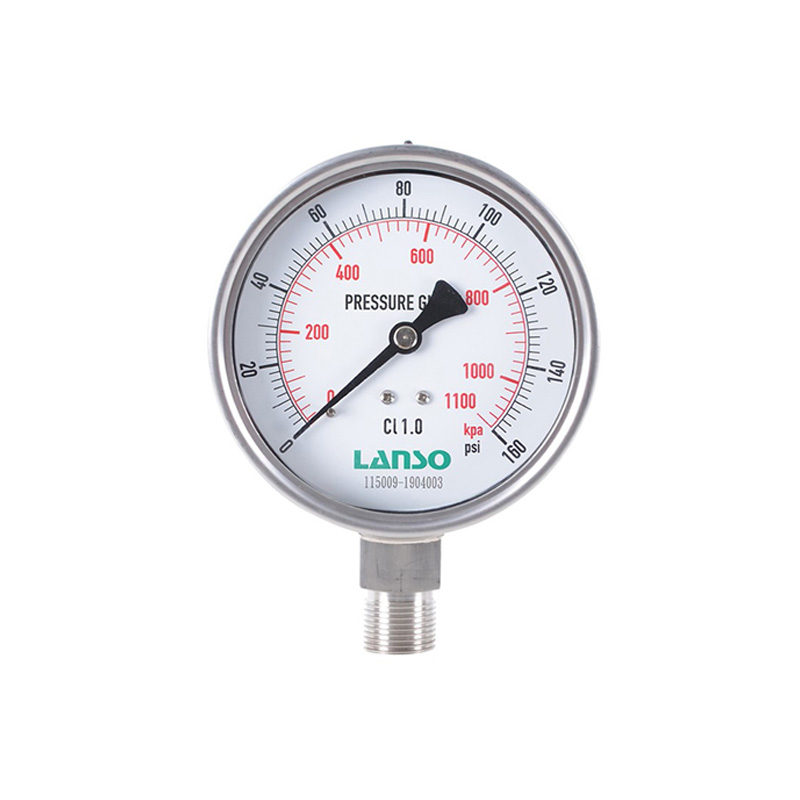How to Read the Vacuum Pressure Gauge?
(2023年08月08日)https://www.lansoinstruments.com/how-to-read-the-vacuum-pressure-gauge.html
1. Overview of vacuum pressure gauge
The vacuum pressure gauge is an instrument used for vacuum pressure measurement. It uses atmospheric pressure as a reference and is an instrument used to measure less than atmospheric pressure.
2. How to read the vacuum pressure gauge?
The pressure units on the vacuum pressure gauge include inHg, bar, MPa, PSI, 1MPa=145psi. It is easier to read the pressure in terms of MPa. R and the number are the code names of the refrigerant gauge. The pressure of the refrigerant gauge is closely connected with the temperature. In engineering industry, the kilograms of pressure are referred to kg/cm2, and the pressure gauge is often marked with mpa. 1 N/m2=1 Pa, 1 kg=9.8 N, 1m2=10000 cm2, so 1kg/cm2=98 KPa = 0.098 MPa. Generally, people take an approximate value of 1 MPa=10 kg/cm2.
The range of the vacuum pressure gauge starts from zero, and the range of the absolute pressure gauge starts from -1 Bar. The pressure gauge is widely used for measuring the pressure of the liquid, gas, steam and other media that are not corrosive to the alloy in pipelines and containers.
3. The use of vacuum pressure gauge
The vacuum pressure gauge has the advantages of small size, safety and reliable performance, and clear display. There are two ways to express pressure: one is the pressure expressed on the basis of absolute vacuum, called absolute pressure; the other is the pressure expressed on the basis of atmospheric pressure, called relative pressure.
Since the pressure measured by most pressure measuring instruments is relative pressure, it is also called gauge pressure. When the absolute pressure is less than atmospheric pressure, the absolute pressure in the container can be represented by a value that is less than one atmospheric pressure, which is called "vacuum".
For more information about tool to measure gas pressure and sf6 gas density monitor, please feel free to contact us!
- このできごとのURL:




コメント